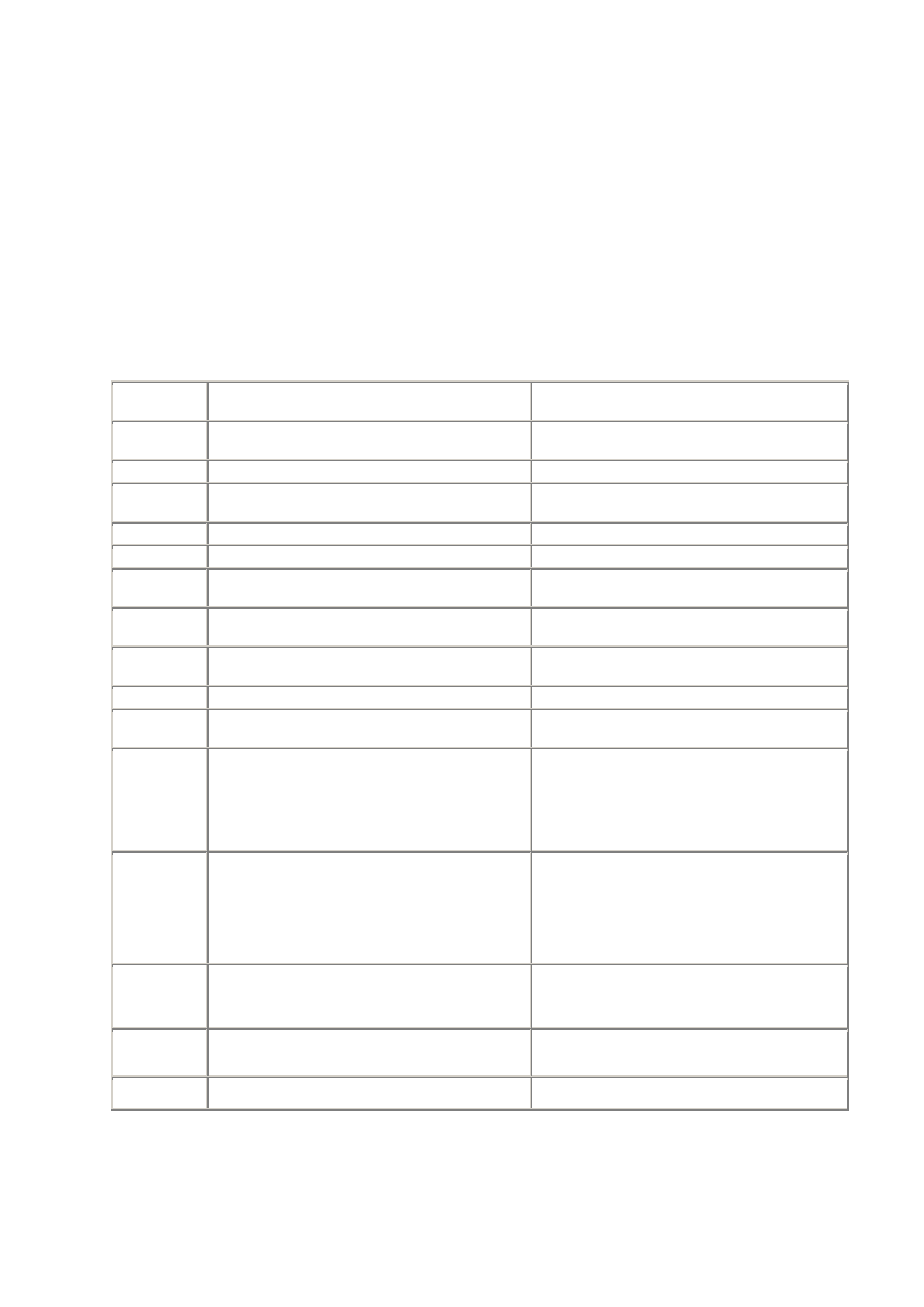
CAUTION:
Before servicing this chassis, it is important that the service technician read the "Safety
Precautions" and "Product Safety Notices" in this service manual.
ATTENTION:
Avant d'effectuer l'entretien du châassis, le technicien doit lire les «Précautions de sécurité»
et les «Notices de sécurité du produit» présentés dans le présent manuel.
VORSICHT:
Vor Öffnen des Gehäuses hat der Service-Ingenieur die ,,Sicherheitshinweise" und ,,Hinweise
zur Produktsicherheit" in diesem Wartungshandbuch zu lesen.
SERVICE MANUAL
MANUEL D'ENTRETIEN
WARTUNGSHANDBUCH
Data contained within this Service
manual is subject to alteration for
improvement.
Les données fournies dans le présent
manuel d'entretien peuvent faire l'objet
de modifications en vue de perfectionner
le produit.
Die in diesem Wartungshandbuch
enthaltenen Spezifikationen können sich
zwecks Verbesserungen ändern.
SPECIFICATIONS AND PARTS ARE SUBJECT TO CHANGE FOR IMPROVEMENT
PLASMA TV
OCTOBER 2002
SM00033
AV3000E

SAFETY PRECAUTIONS
WARNING: The following precautions must be observed.
ALL PRODUCTS
1.
Before any service is performed on the chassis an isolation transformer should be inserted
between the power line and the product.
2.
When replacing the chassis in the cabinet, ensure all the protective devices are put back in
place.
3.
When service is required, observe the original lead dressing. Extra precaution should be taken
to ensure correct lead dressing in any high voltage circuitry area.
4.
Many electrical and mechanical parts in HITACHI products have special safety related
characteristics. These characteristics are often not evident from visual inspection, nor can the
protection afforded by them necessarily be obtained by using replacement components rated
for higher voltage, wattage, etc. Replacement parts which have these special safety
characteristics are identified by marking with a
on the schematics and the replacement
parts list.
The use of a substitute replacement component that does not have the same safety
characteristics as the HITACHI recommended replacement one, shown in the parts list, may
create electrical shock, fire, X-radiation, or other hazards.
5.
Always replace original spacers and maintain lead lengths. Furthermore, where a short circuit
has occurred, replace those components that indicate evidence of overheating.
6.
Insulation resistance should not be less than 2M
at 500V DC between the main poles and
any accessible metal parts.
7.
No flashover or breakdown should occur during the dielectric strength test, applying 3KV AC or
4.25KV DC for two seconds between the main poles and accessible metal parts.
8.
Before returning a serviced product to the customer, the service technician must thoroughly
test the unit to be certain that it is completely safe to operate without danger of electrical shock.
The service technician must make sure that no protective device built into the instrument by the
manufacturer has become defective, or inadvertently damaged during servicing.
CE MARK
1.
HITACHI products may contain the CE mark on the rating plate indicating that the product
contains parts that have been specifically approved to provide electromagnetic compatibility to
designated levels.
2.
When replacing any part in this product, please use only the correct part itemised in the parts
list to ensure this standard is maintained, and take care to replace lead dressing to its original
state, as this can have a bearing on the electromagnetic radiation/immunity.
LASERS
If the product contains a laser avoid direct exposure to the beam when the cover is open or when
interlocks are defeated or have failed.
i

LEAD FREE SOLDER
This product uses lead free (unleaded) solder to help preserve the environment. Please read these instructions
before attempting any soldering work.
Caution:
Always wear safety glasses to prevent fumes or molten solder from getting into the eyes. Lead free solder can
splatter at high temperatures (600°C).
Lead Free Solder Indicator
Printed circuit board assemblies using lead free solder shown below are engraved with an "F" following Board
Name.
Properties of Lead Free Solder
The melting point of lead free solder is 40~50°C higher than leaded solder.
When Servicing Solder
Solder with an alloy composition of Sn-3.0Ag-0.5Cu or Sn-0.7Cu is recommended.
Although servicing with leaded solder is possible there are a few precautions that have to be taken. (Not taking
these precautions may cause the solder not to harden properly and lead to consequent malfunctions.)
Precautions when Using Leaded Solder
·
Remove all lead free solder from soldered joints when replacing components.
·
If leaded solder should be added to existing lead free joints, mix in the leaded solder thoroughly after the
lead free solder has been completely melted (do not apply the soldering iron without adding solder).
When Servicing Soldering Iron
A soldering iron with a temperature setting capability (temperature control function) is recommended.
The melting point of lead free solder is higher than leaded solder. To avoid poor servicing performance, use a
soldering iron that maintains a high stable temperature (large heat capacity) and that allows temperature
adjustment according to the part being serviced.
Recommended Soldering Iron
Soldering iron with temperature control function (temperature range: 320~450°C)
Recommended temperature range for each part type:
Part to be Soldered
Soldering Iron
Temperature
PCB with surface mount devices
320 ±30°C
PCB without surface mount devices
380 ±30°C
Chassis, metallic shield, etc.
420 ±30°C
Board Assemblies Using Lead Free Solder:
·
FC4PDP Board (AVC block)
·
SIGNAL/SOUND Board (MONITOR block)
·
SP Terminal L/R Board, FILTER Board, LED Board (MONITOR block)
ii

AV3000 AVC Unit Service Manual
TABLE OF CONTENTS
1.
FEATURES ...............................................................................................................................................1
2.
GENERAL SPECIFICATION ....................................................................................................................1
3.
AV MODES ...............................................................................................................................................2
4.
AV BOARD DESCRIPTION ......................................................................................................................2
4.1.
AVC Block Diagram ...........................................................................................................................2
4.2.
Tuner/Video Chroma (Schematic Sheet 1)........................................................................................2
4.3.
Sound/AV3 Control (Schematic Sheet 2) ..........................................................................................4
4.4.
Interface Board (Schematic Sheet 3) ................................................................................................6
4.5.
Power Circuit/Level Shifter (Schematic Sheet 4)...............................................................................8
4.6.
Micro-controller (Schematic Sheet 5) ................................................................................................9
4.7.
COMB Filter/SVHS Output (Schematic Sheet 6).............................................................................10
4.8.
SCART/FC-MSC Connection (Schematic Sheet 7).........................................................................11
5.
AVC POWER BOARD DESCRIPTION...................................................................................................12
5.1.
AVC Power Board Block Diagram ...................................................................................................12
5.2.
Switching Regulator, Controller and Power MOS FET....................................................................12
5.3.
DC+5V Switching Regulator Module ...............................................................................................13
5.4.
Photo-coupler...................................................................................................................................13
5.5.
Switching Regulators .......................................................................................................................13
5.6.
DC+5V Series Regulator .................................................................................................................14
5.7.
Connectors.......................................................................................................................................14
6.
FC4 BOARD DESCRIPTION ..................................................................................................................15
6.1.
FC4 Board Block Diagram ...............................................................................................................15
7.
PINOUT DATA ........................................................................................................................................16
7.1.
Micro-controller Pin-out (SDA5550).................................................................................................16
7.2.
AVC-PDP Connectors .....................................................................................................................17
7.3.
FC4 Connectors...............................................................................................................................18
8.
SERVICING INFORMATION ..................................................................................................................21
8.1.
Diagnostics ......................................................................................................................................21
8.2.
AV Board Troubleshooting...............................................................................................................21
8.3.
Power Board Troubleshooting .........................................................................................................22
8.4.
Service Menu Data ..........................................................................................................................23
9.
UNIT WIRING DIAGRAM .......................................................................................................................36
9.1.
AVC Unit ..........................................................................................................................................36
10.
ASSEMBLY DIAGRAM ...........................................................................................................................37
10.1.
AVC Unit.......................................................................................................................................37
11.
SCHEMATIC DIAGRAMS.......................................................................................................................38
11.1.
AV Board Schematics ..................................................................................................................38
11.2.
Power Board.................................................................................................................................45
11.3.
Control Board ...............................................................................................................................46
11.4.
Mains Switch, Filter, Speaker & LED Boards...............................................................................47
12.
PCB LAYOUT DIAGRAMS .....................................................................................................................48
12.1.
AV Board ......................................................................................................................................48
12.2.
Power Board.................................................................................................................................49
12.3.
Control, Speaker, Filter & LED Boards ........................................................................................50
13.
PARTS LISTS .........................................................................................................................................51
13.1.
AV3000 Assembly Parts List........................................................................................................51
13.2.
AV Board Parts List ......................................................................................................................51
13.3.
Power Board Parts List ................................................................................................................51
13.4.
Control Board Parts List ...............................................................................................................51
iii

1
AV3000 AVC Unit Service Manual
1. FEATURES
·
852x1024 resolution, created by 32" ALIS Plasma display panel
·
1024x1024 resolution, created by 37"/42" ALIS Plasma display panel
·
Advanced progressive & 1024 interlace, generates detailed picture without flicker
·
TruBass by SRS, gives real bass sound
·
Thin (9cm) and light, by separating monitor from tuner box (AVC). It is possible to hang monitor
on the wall.
·
Swivel stand attached monitor, possible to swivel 30deg left and right.
·
3 SCART connectors plus front AV input can be connected with DVD, Set Top Box, VCR and
camera at the same time.
·
1 Component input allows YPbPr and PCbCr to be received. Signal is automatically identified.
·
PC input connection, supporting various PC display formats.
2. GENERAL SPECIFICATION
Model
32PD3000
(PDP; 32PD3000E + AVC; AV3000E)
42PD3000
(PDP; 42PD3000E + AVC; AV3000E)
PDP panel
32" (ALSI for mat) Plasma display panel (16:9),
resolution 852(H) x1024 (V)
42" (ALSI for mat) Plasma display panel (16:9),
resolution 1024(H) x1024 (V)
Display size
976 (W) x 258 (D) x 580 (H) mm
1233 (W) x 300 (D) x 713 (H) mm
Sound output
level
Max. 10W x2 (6W)
Max. 12W x2 (6W)
Speaker
4x 16cm corn type x2
???
Power supply AC 220~240V 50Hz
AC 220~240V 50Hz
Power
consumption
PDP 260W (stand-by <2W) AVC 30W, (stand-by
<2W)
PDP 360W (stand-by <2W) AVC 30W, (stand-by
<2W)
Colour
system
PAL/SECAM/NTSC4.43/NTSC3.58/PAL60
PAL/SECAM/NTSC4.43/NTSC3.58/PAL60
Sound
system
I/B.G.H/LL'
I/B.G.H/LL'
Tuning freq.
45~889MHz, VHF low/VHF high/Hyper/UHF
45~889MHz, VHF low/VHF high/Hyper/UHF
Position
selection
100 (0~99) positions. Plus channel direct (C--/S--)
and frequency direct (---.--MHz)
100 (0~99) positions. Plus channel direct (C--/S--)
and frequency direct (---.--MHz)
PC input
signal
Horizontal freq 24~109KHz / Vertical freq
50~85Hz.
Analogue RGB, input voltage 0.7/1.0 Vp-p
selectable.
H/V separate sync (TTL level) *** sound input;
common with AV3 or AV4
Horizontal freq 24~109KHz / Vertical freq
50~85Hz.
Analogue RGB, input voltage 0.7/1.0 Vp-p
selectable.
H/V separate sync (TTL level) *** sound input;
common with AV3 or AV4
AV input
SCART101 (CVBS/SVHS/LR sound) - AV1
SCART102 (CVBS/RGB/LR sound) - AV2
SCART100 (CVBS/RGB/LR sound) - AV3
COMPONENT (YPbPr/YCbCr/LR sound) - AV4
Front AV (CVBS/SVHS/LR sound) - FRONT
CENTRE AUDIO input
SCART101 (CVBS/SVHS/LR sound) - AV1
SCART102 (CVBS/RGB/LR sound) - AV2
SCART100 (CVBS/RGB/LR sound) - AV3
COMPONENT (YPbPr/YCbCr/LR sound) - AV4
Front AV (CVBS/SVHS/LR sound) - FRONT
CENTRE AUDIO input
Dimensions
PDP: 974 (W) x 256 (D) x 578 (H) mm including
monitor stand
AVC: 430 (W) x 293 (D) x 121 (H) mm
PDP: 1030 (W) x ?? (D) x 636 (H) mm including
monitor stand
AVC: 430 (W) x 293 (D) x 121 (H) mm
Weight
PDP: 28.7Kg (net)
AVC: 3.2Kg (net)
PDP: 40.2Kg (net)
AVC: 3.2Kg (net)
Remote
2x Hitachi R6P(G) * equivalent 'AA'
2x Hitachi R6P(G) * equivalent 'AA'
